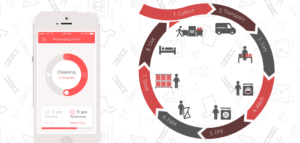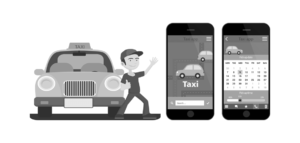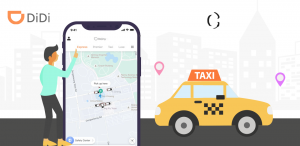Reason behind Uber’s 4% shares drop

The organisation’s income fell contrasted with both the year-back quarter (Q2 2019) and the consecutively going before period (Q1 2020).
Speculators had foreseen Uber’s decline due to COVID-19, and the organisation had invested energy recently guaranteeing the contributing open that it had enough money to get past 2020 regardless.
In the subsequent quarter, Uber saw net appointments of $10.2 billion, off 35% contrasted with the year-back period.
This brought about the income of $2.24 billion, down 29% from a year-prior aftereffect of $3.17 billion. Uber’s total deficit was $1.78 billion in the second quarter of 2020, down from a year-prior overall deficit of $5.24 billion.
The organisation opened up to the world a year ago, bringing about different one-time, non-money costs.
The organisation’s overall deficit worked out to lost $1.02 per share, in front of an expert expected $0.86 per-share shortfall.
Uber missed on benefit in the quarter, yet surpassed road desires on the top line, posting more income than the $2.18 billion figure financial specialists anticipated.
Portions of Uber are off somewhat more than 4% in nightfall exchanging, following its income report.
A Q1 Retrospective
Uber announced a Q1 per-share loss of $1.70 on incomes of $3.54 billion.
The organisation lost $2.94 billion in the first quarter considering all consequences.
As noted over, Uber’s per-share misfortune in the subsequent quarter tumbled to $1.02, while its income slipped to $2.24 billion; Uber’s top-line accordingly plunged 36.7% contrasted with the first quarter.
Burrowing further, Uber created $737 million in ride-hailing trips in the subsequent quarter, contrasted with $1.66 billion in the initial three-month time of this current year.
Net appointments were likewise down over 35% from $15.78 billion in the first quarter contrasted with the second.
There was some rosier news covered in this snowstorm of numbers.
Uber’s Freight and Eats (which is presently called Delivery) organisations lost cash, although those misfortunes limited from Q1 to Q2.
Uber announced that balanced EBITDA on its “delivery” fragment limited to a $232 million misfortune in the subsequent quarter contrasted with a bigger $313 million setback in the first time of the year.
Uber Freight’s balanced EBITDA was a $49 million misfortune in Q2, littler than the $64 million delays detailed in Q1.
A Changing Business
Uber’s quarter was a time of progress. Contrasted with the year-back quarter, the organisation’s Delivery business (some time ago its Uber Eats fragment) saw its stable net income take off 162% compared with the year-prior quarter.
Simultaneously, its more significant Mobility portion (already its Rides business) saw its balanced net income fall 66% contrasted with Q2 2019.
Uber’s ride-hailing business fell forcefully as people remained at home, while those equivalent people requested parcels more food.
The appointments blend move to food conveyance helped Uber ardent ride-hailing misfortunes, however not totally.
Ride-hailing, when a key driver of gainfulness at the organisation, just produced $50 million in balanced EBITDA in Q2, a vigorously revised benefit metric.
That figure was off by $465 million contrasted with the year-back period, and of $531 million compared with Q1 2020.
“Our versatility recuperation is reliant on the general wellbeing circumstance in some random region,” CEO Dara Khosrowshahi said during the Q2 profit call.
“Asia and India are in the recuperation. We’ve seen net appointments in Hong Kong and New Zealand on occasion surpass pre-COVID highs and European patterns have likewise been empowering.”
In the meantime, the U.S. recuperation is slacking.
The organisation’s worldwide geographic impression stays a colossal favourable position, Khosrowshahi noted. He included that once urban communities do a resume, trips ricochet back pointedly.
While ride-hailing lost ground, the rising income impression of Uber’s Delivery business posted slimmer misfortunes than in the year-prior and consecutively going before quarter.
With a balanced EBITDA loss of $232 million in Q2 2020, the organisation shaved off more than $50 million in misfortunes contrasted with its year-back steady EBITDA loss of $286 million; in Q1 2020, Delivery posted balanced blows of $313 million.
Typically those decreases are to a great extent outside of Uber’s control; however, they do show the sharp effect that the worldwide pandemic and resulting covering of diverse economies had on the 2019 IPO.
Uber shut the period with (money, money reciprocals and transient speculations) of $7.8 billion. That figure was $9.0 billion toward the finish of its first quarter.
The Final Word
Uber is a leading On-Demand application, with millions of users every year. Developing an app like uber requires a lot of market research and knowledge about consumer needs and at the time, requires creative and critical thinking.
Our team takes into consideration all kinds of factors while developing an uber app for you. Contact us to know more.









